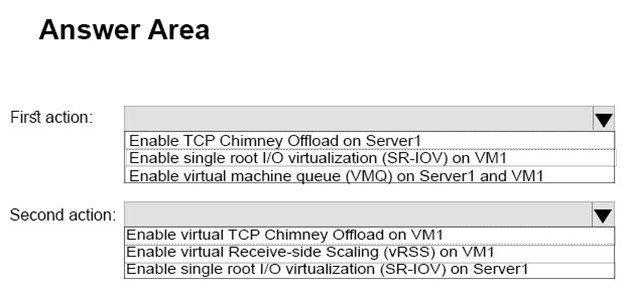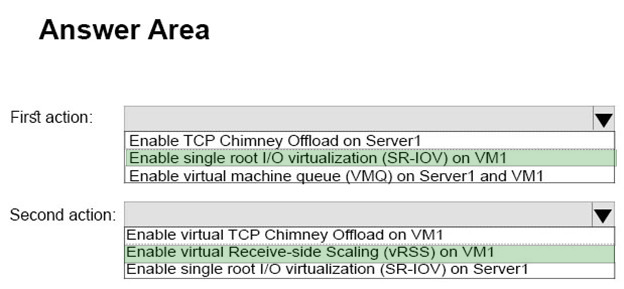

HOTSPOT -
You deploy a new Hyper-V host named Server1 that runs Windows Server 2016.
You implement receive side scaling (RSS) on Server1. The chipset on Server1 does not support NetDMA.
All of the equipment on your network supports 10-Gbps connectivity.
On Server1, you deploy a virtual machine named VM1. You configure VM1 to aggregate all of the Windows and non-Windows log files for all of the servers on the network. VM1 has four virtual processors.
You discover that VM1 drops packets.
You monitor the network, and you discover that the network capacity is sufficient for the monitoring traffic.
You monitor the performance of VM1, and you discover that one processor is consistently at 100 percent utilization, while the other processors are barely in use.
You need to resolve the performance issue.
What should you do? To answer, select the appropriate options in the answer area.
Hot Area:

Omurray
4 years, 5 months agoV1980
4 years, 10 months agojam7272
4 years, 11 months agoMarianoD
4 years, 11 months agoeyeteegrunt
4 years, 11 months agomazintaha
5 years agomazintaha
5 years agoCraig92866
5 years, 2 months agoglukken
5 years, 5 months agodarkknight
5 years, 3 months agorjc
5 years, 5 months agoAldrid
5 years, 6 months agoAldrid
5 years, 6 months agolbs
5 years, 2 months agoAldrid
5 years, 6 months agoLedance
5 years, 6 months agocoleman
5 years, 8 months agocoleman
5 years, 8 months agohkshado
5 years, 8 months ago